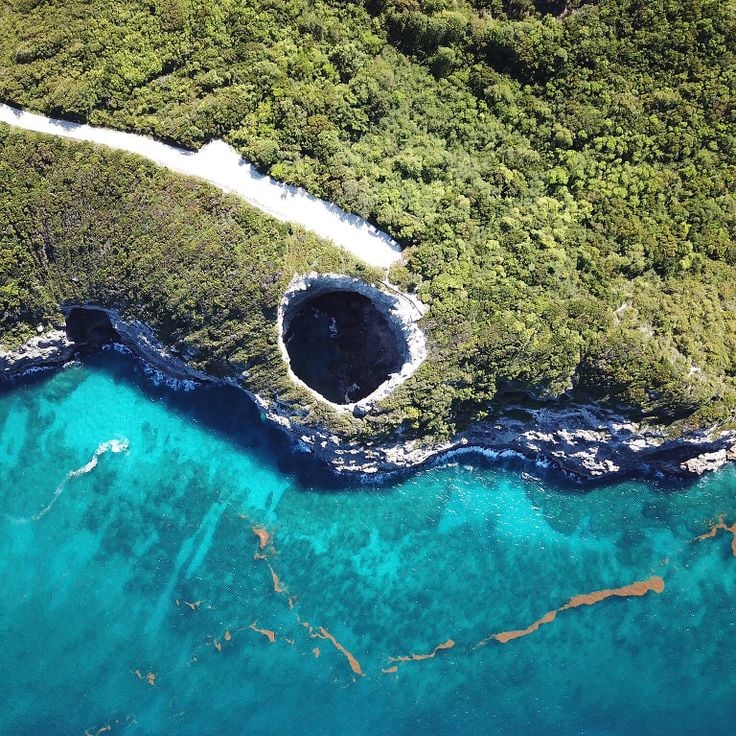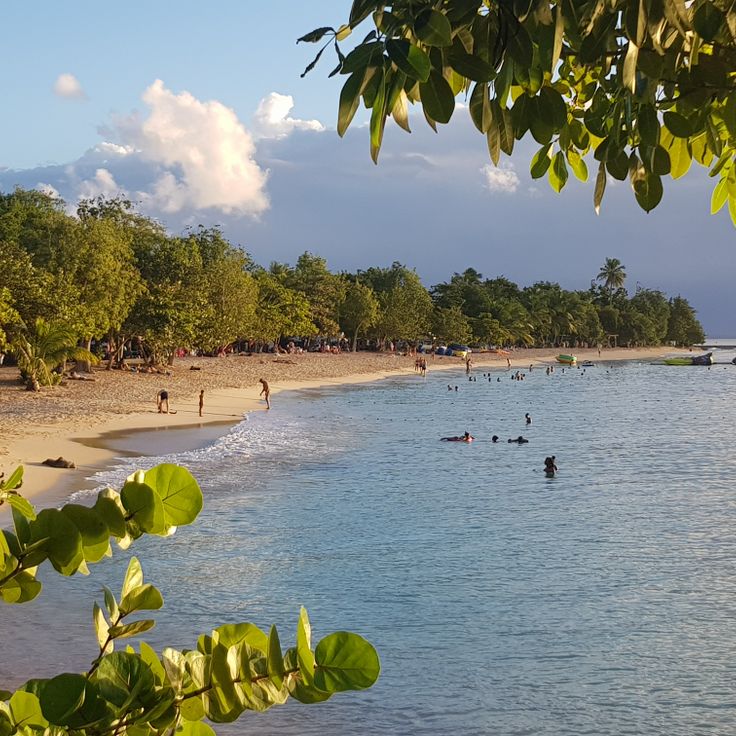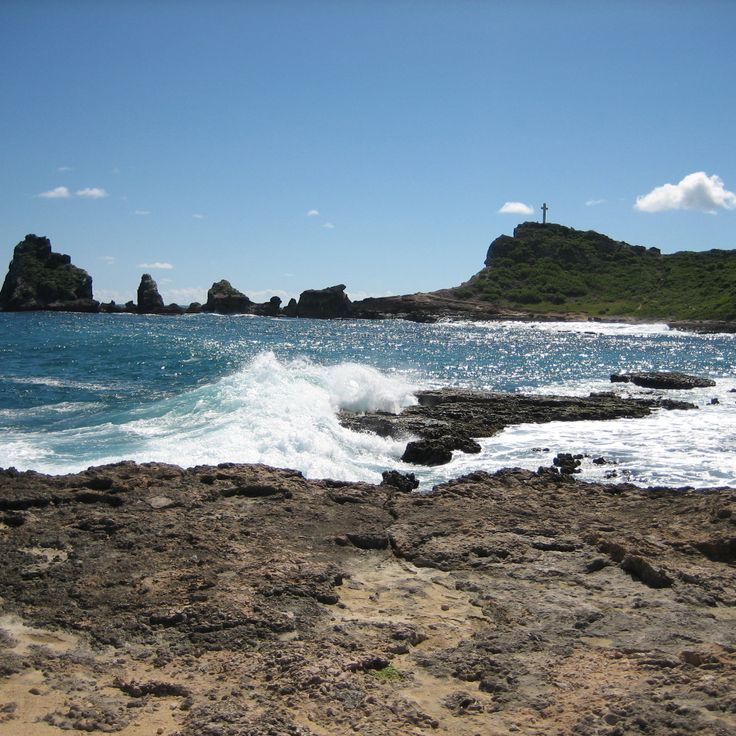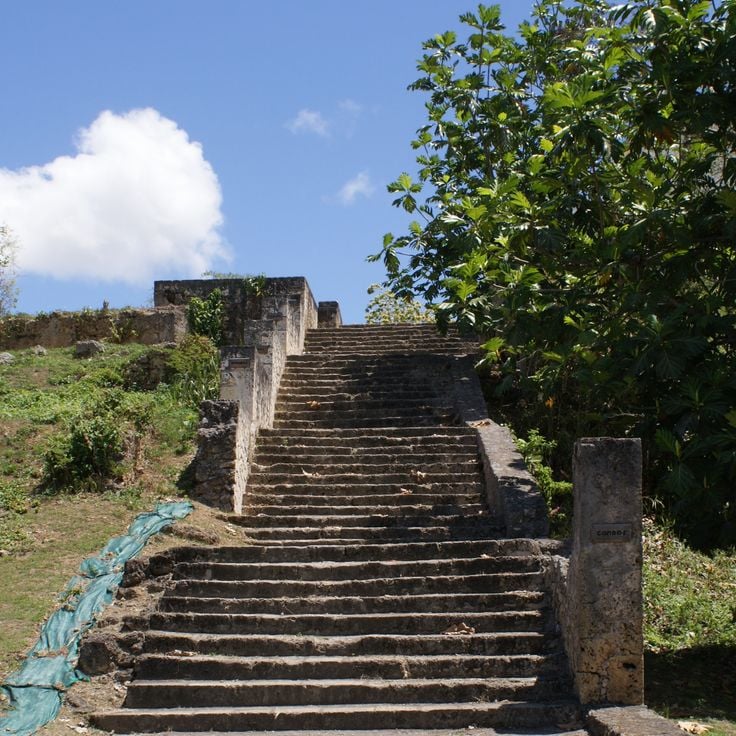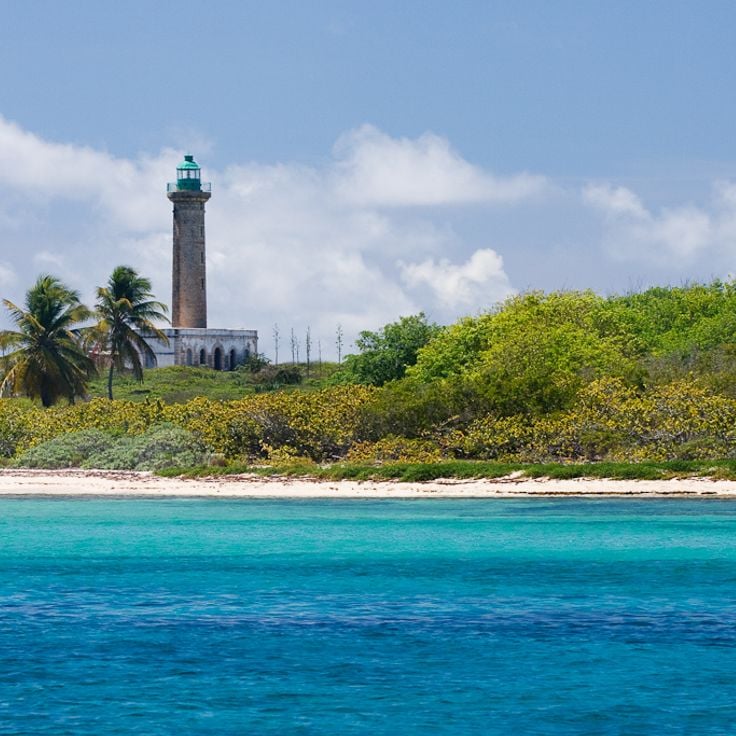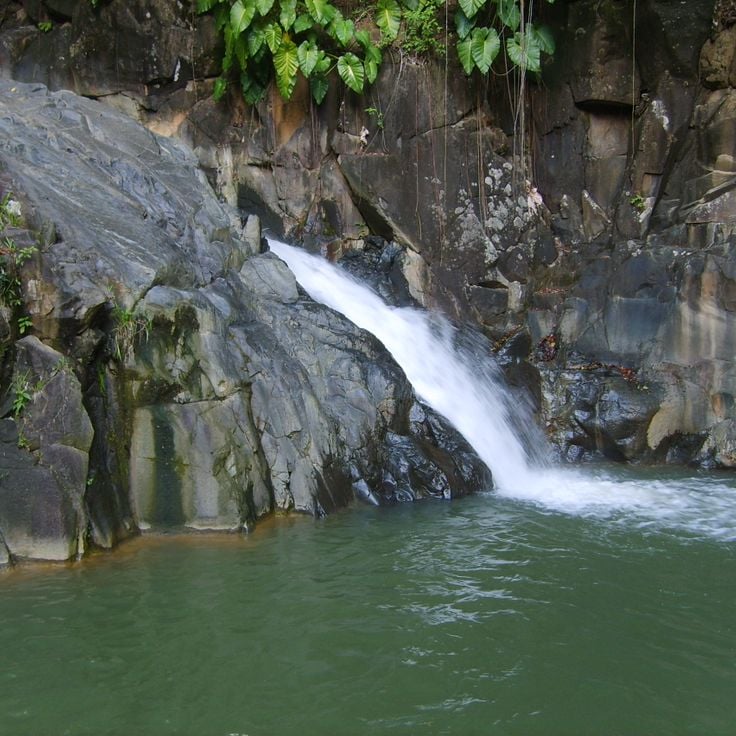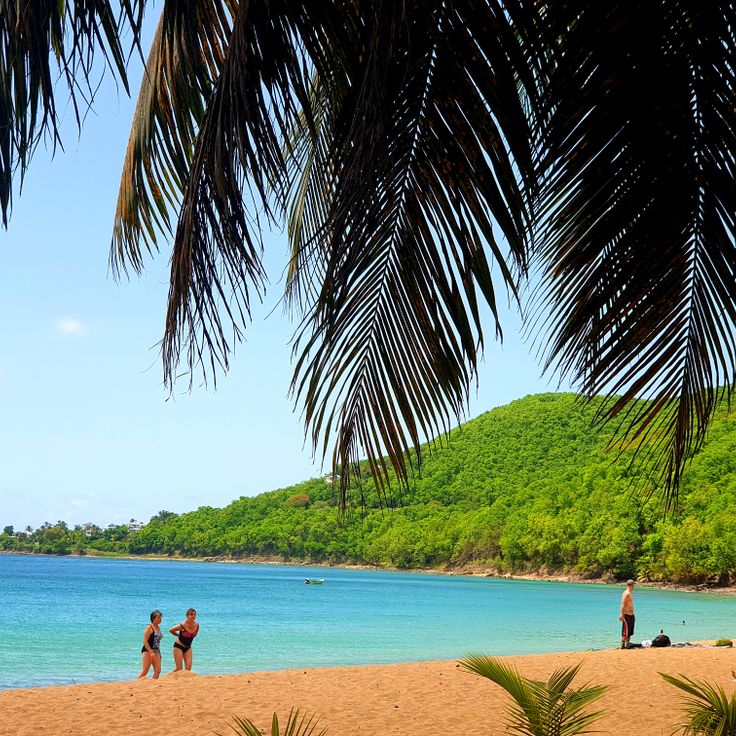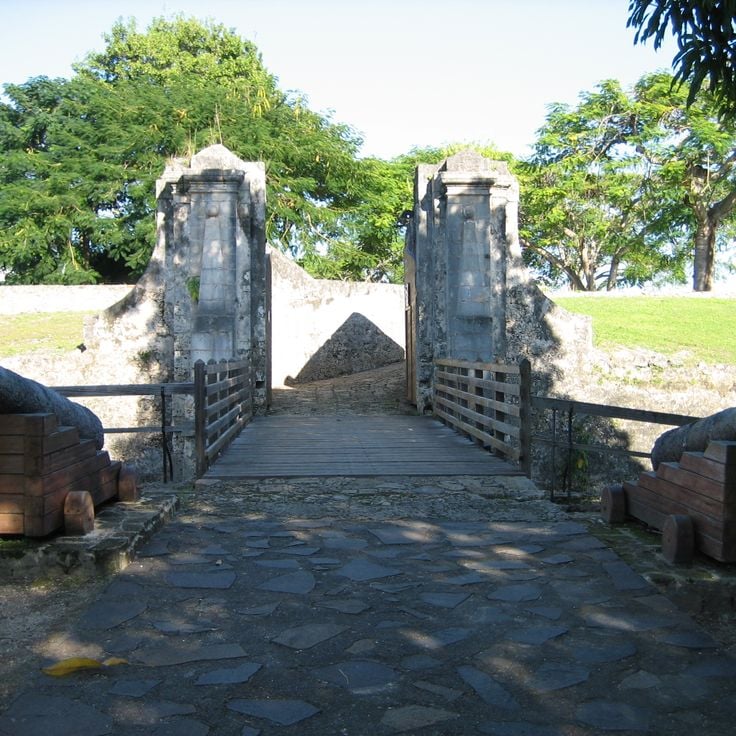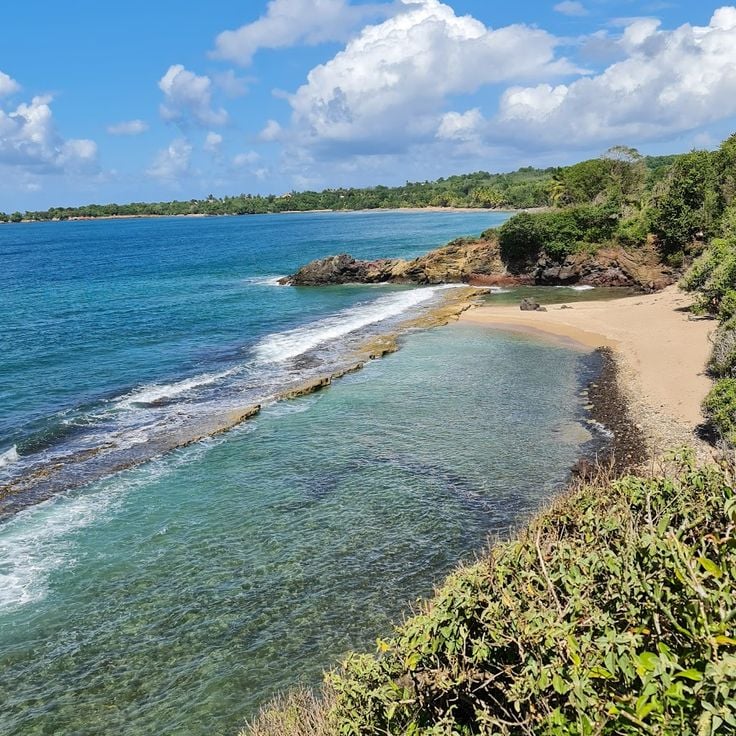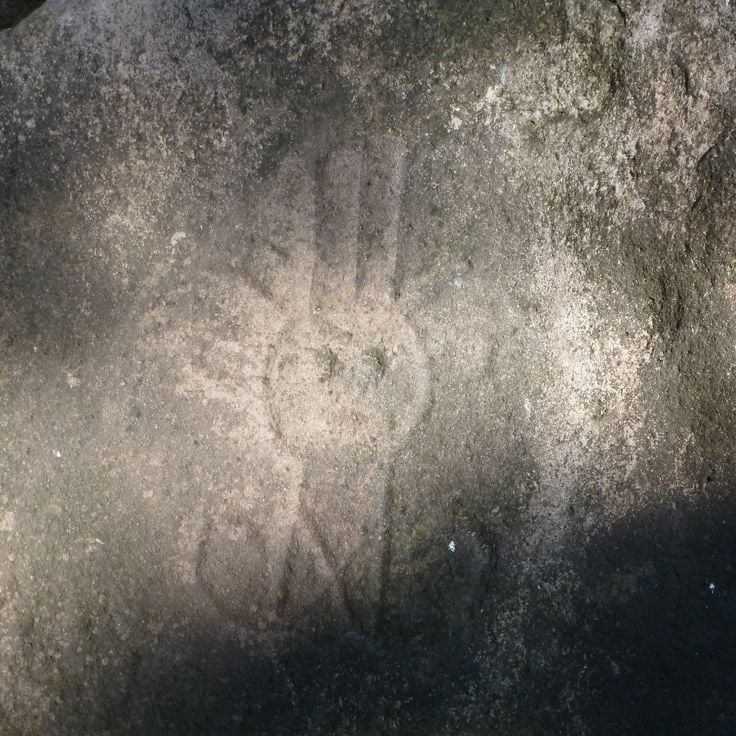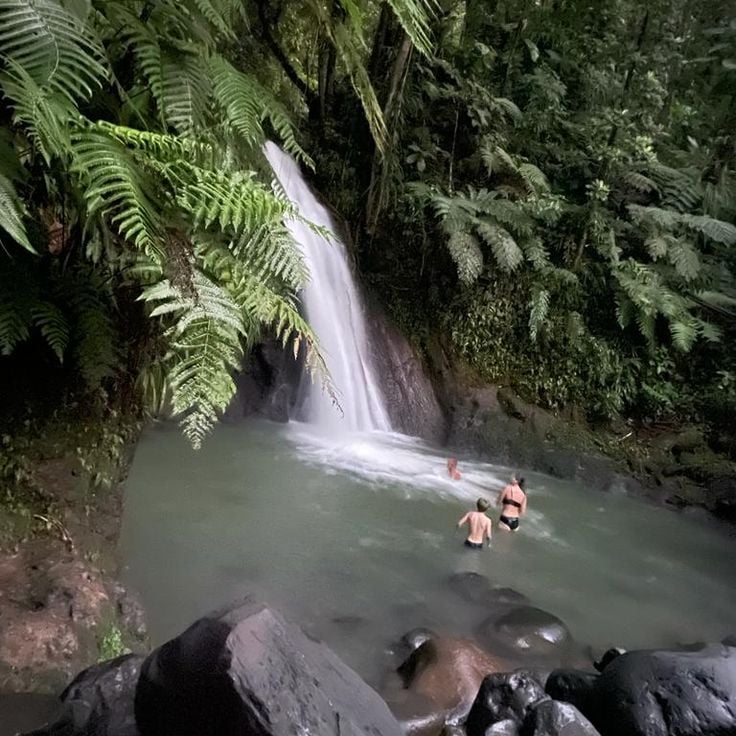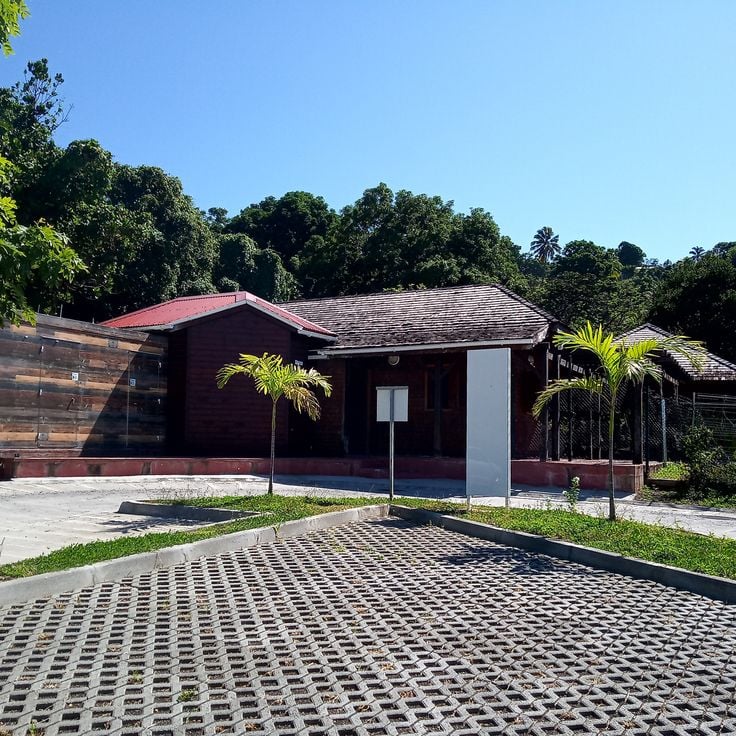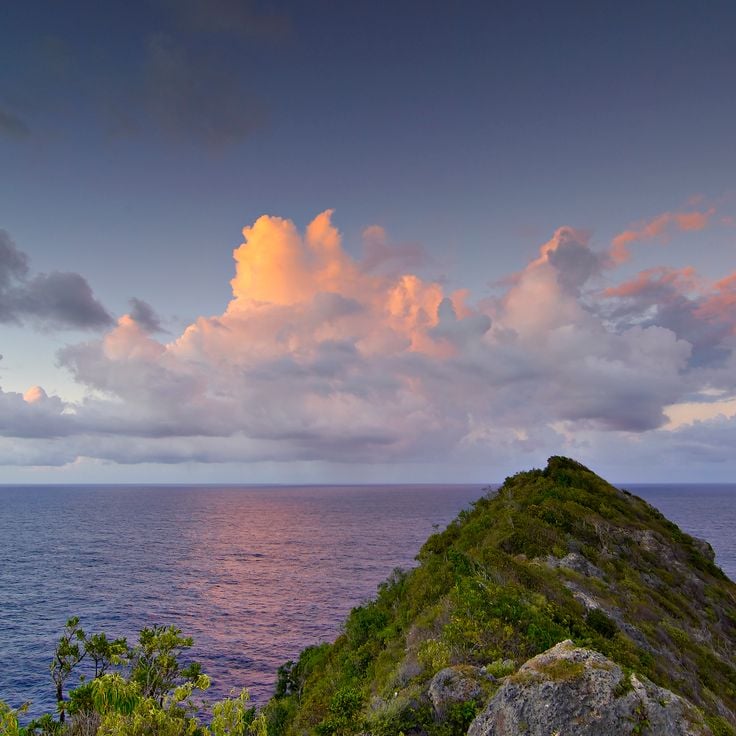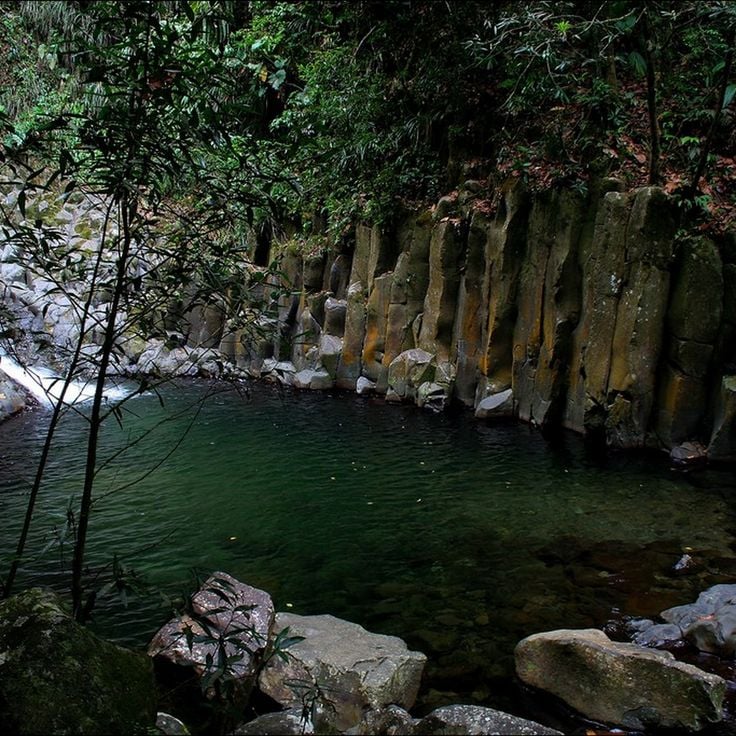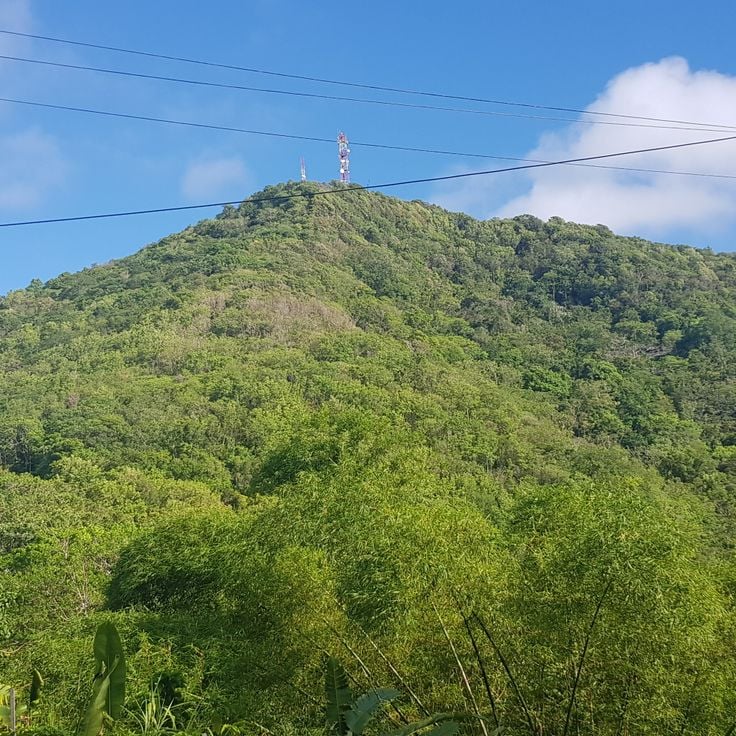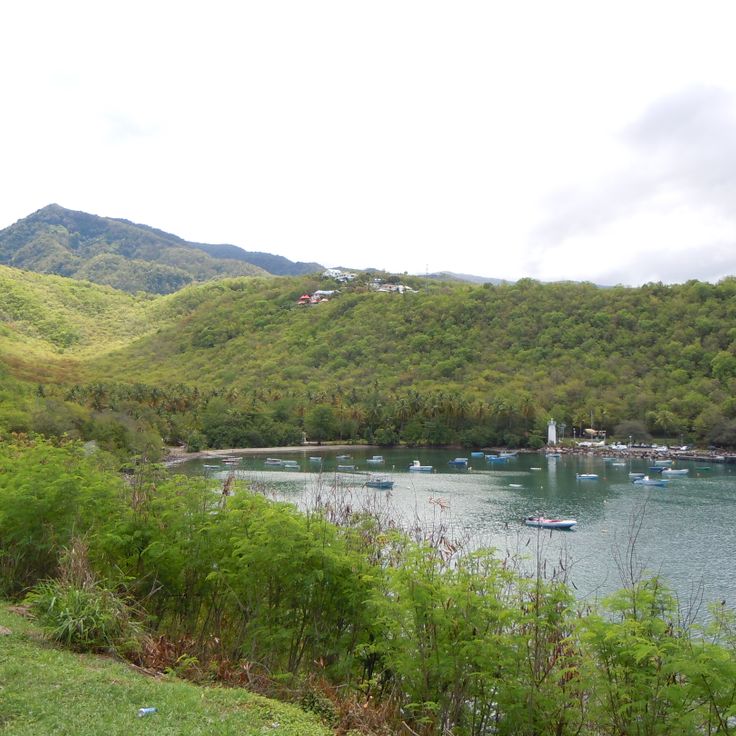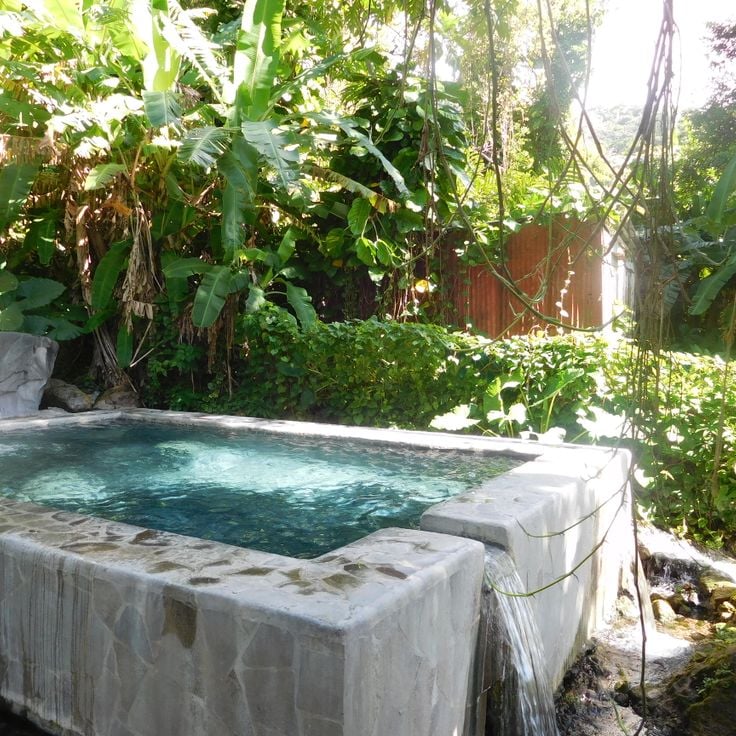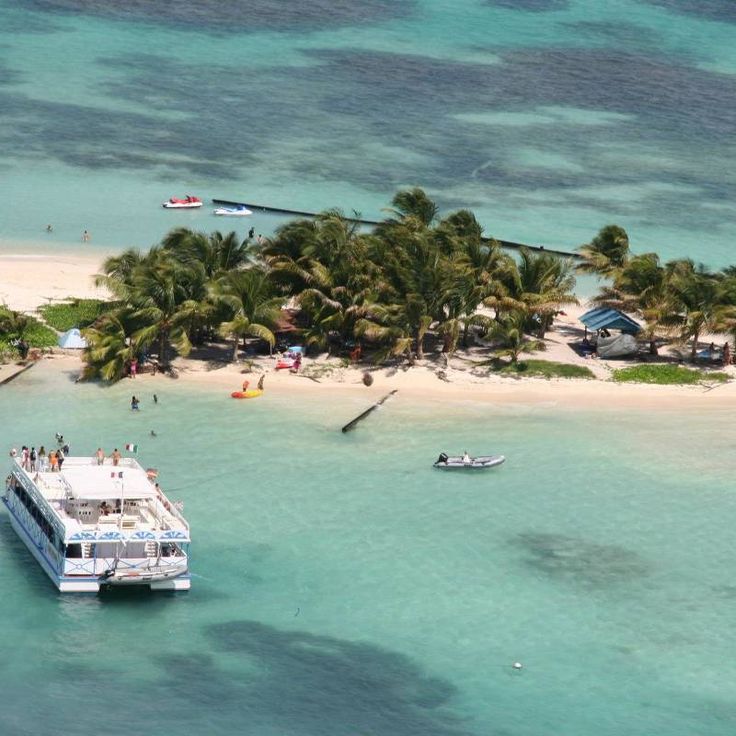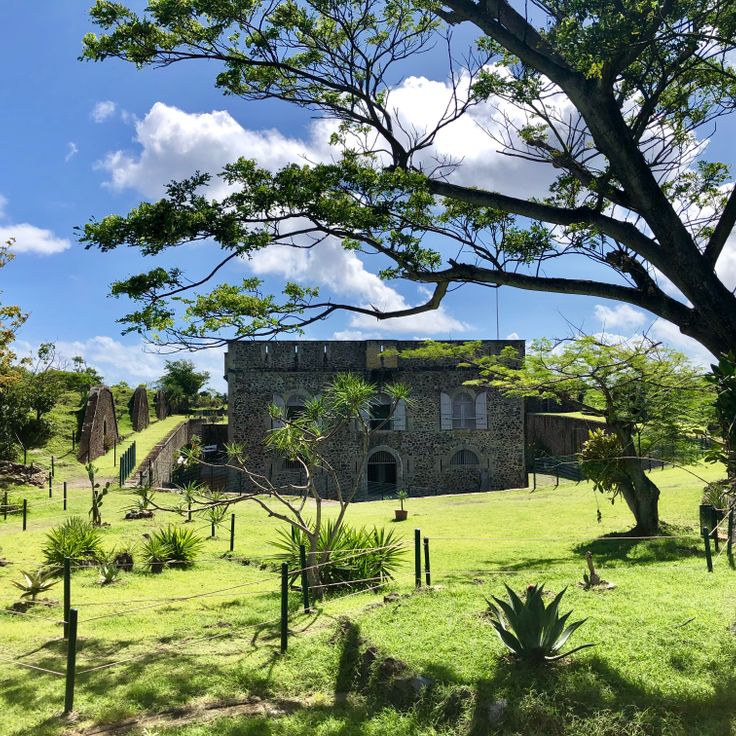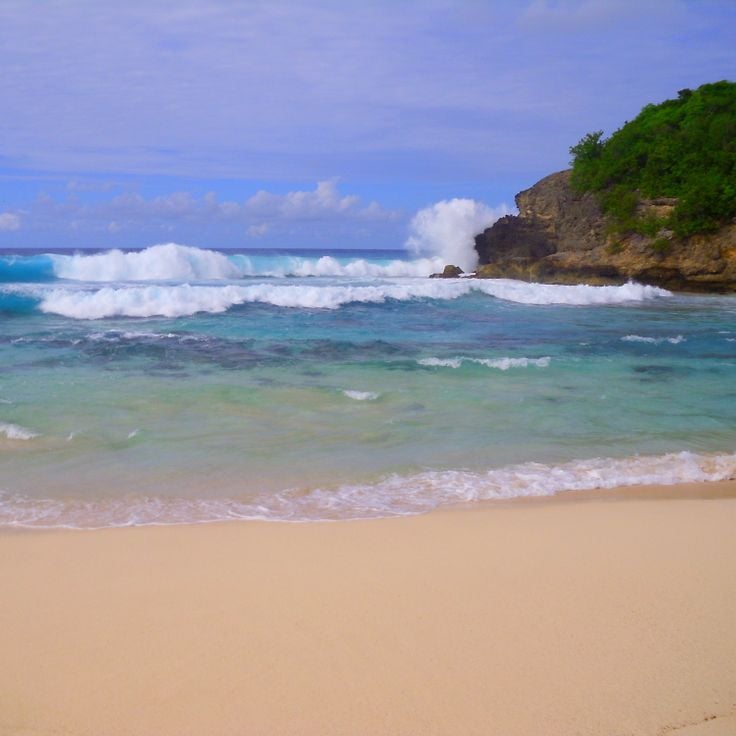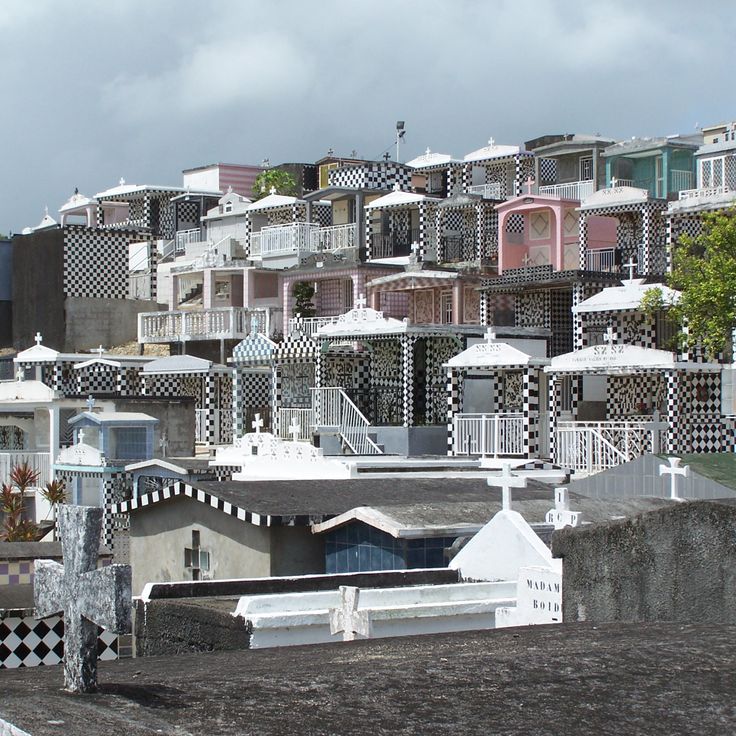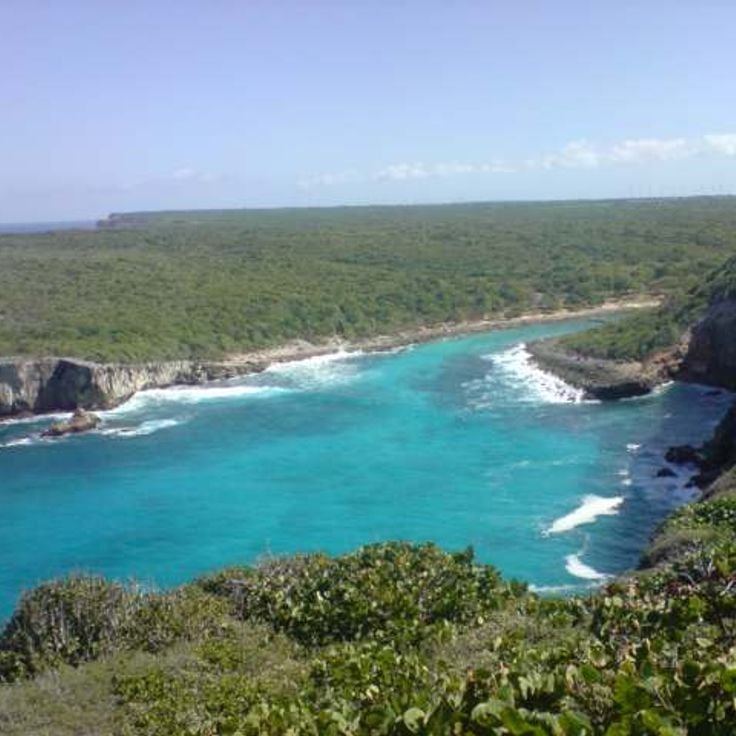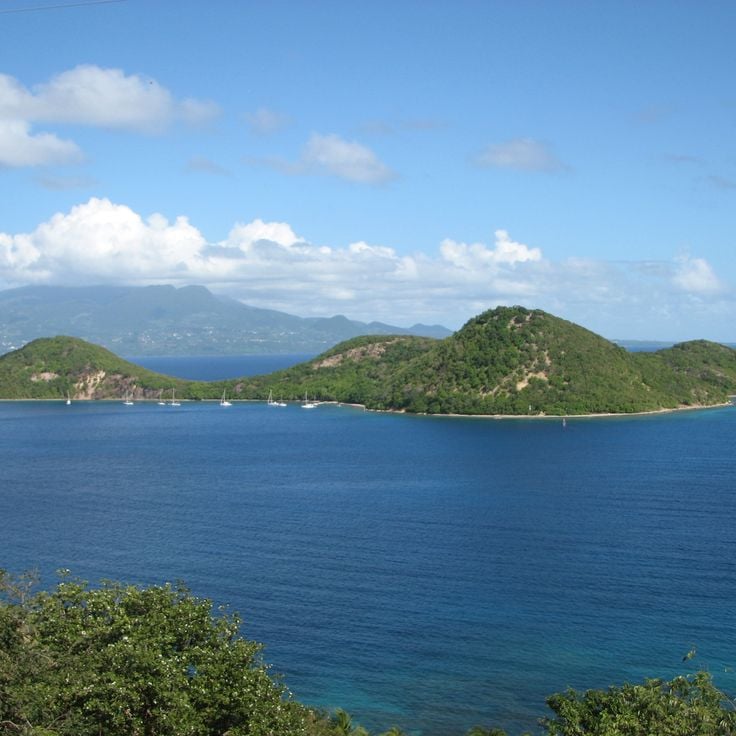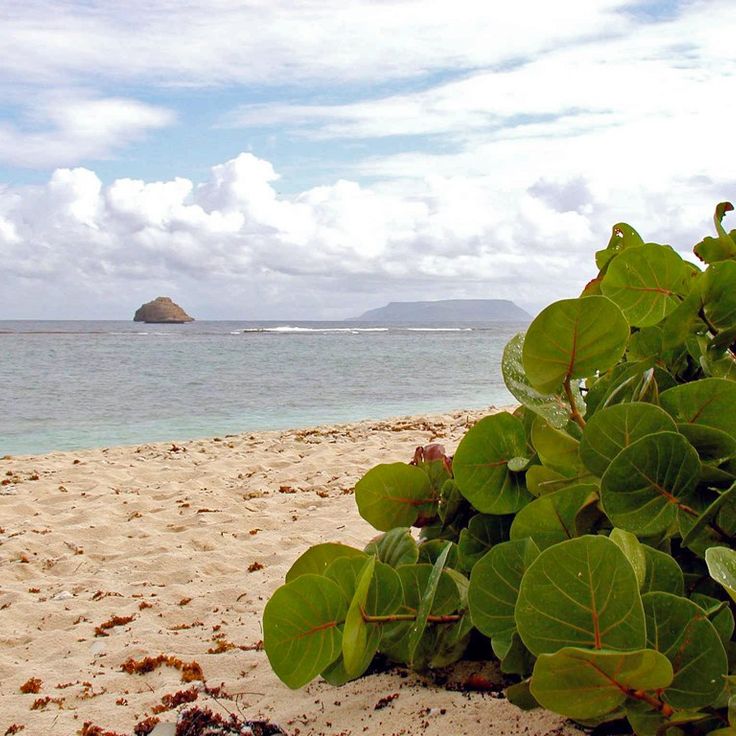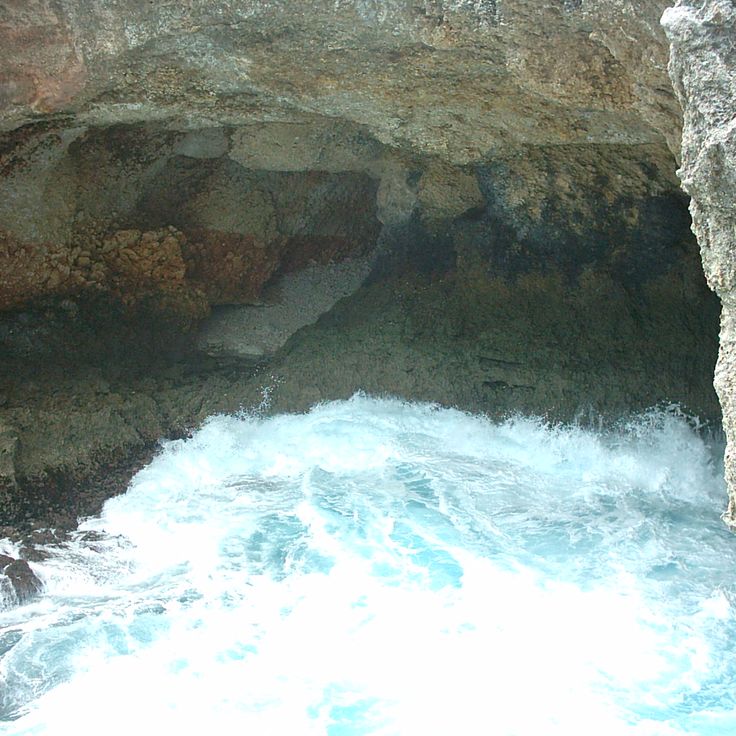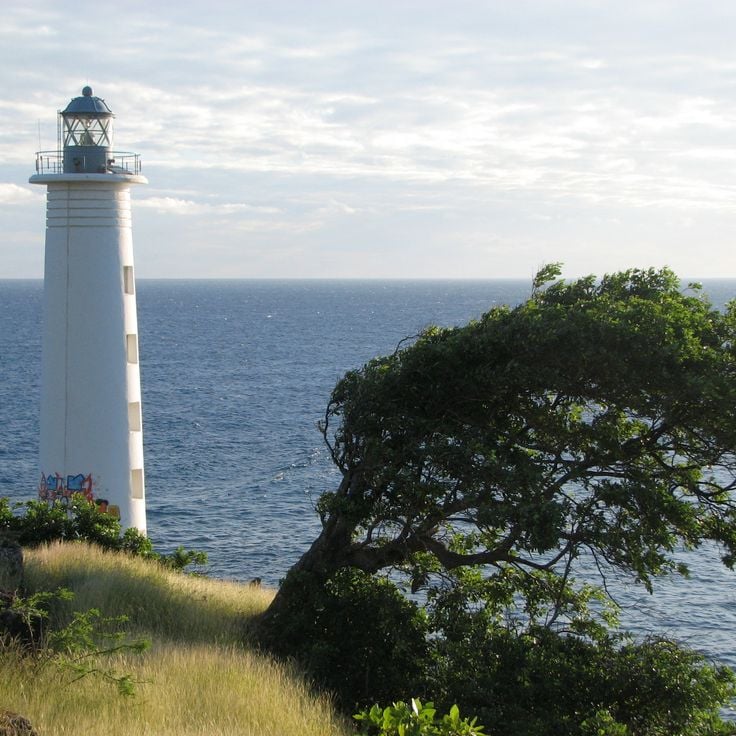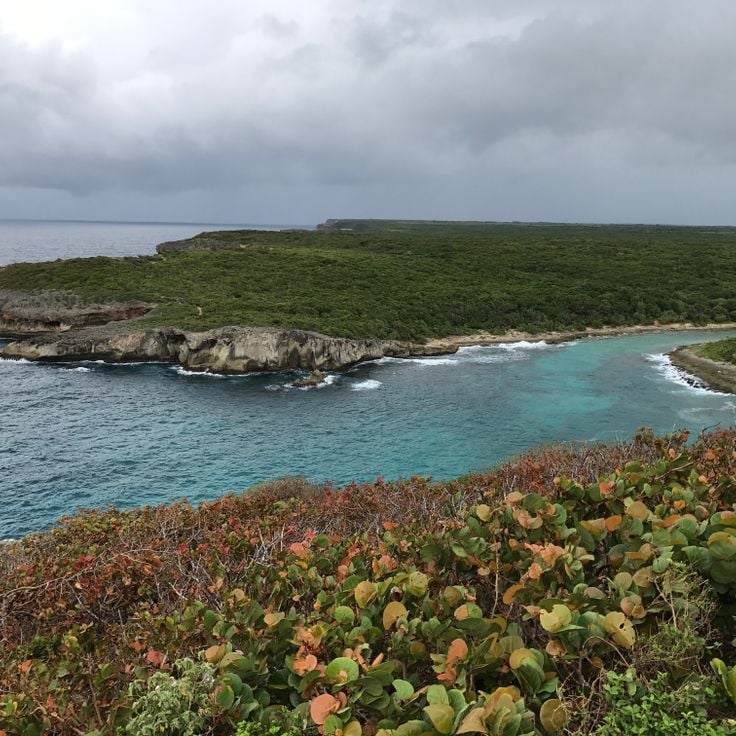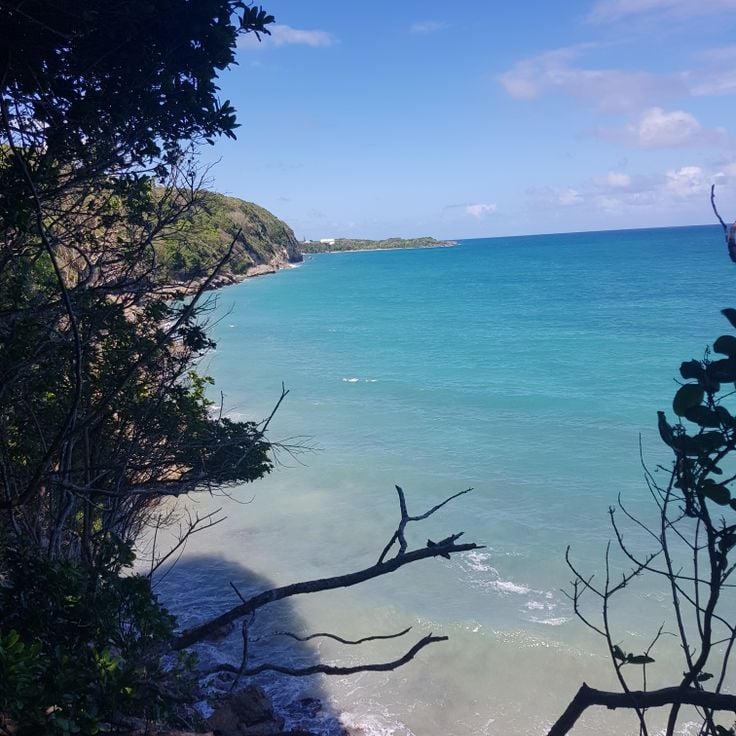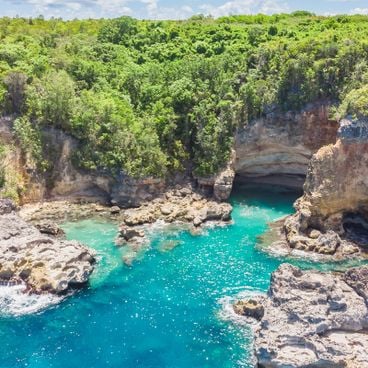Guadeloupe has many surprises beyond its main beaches and usual tourist sites. The archipelago hosts places where nature and history come together: waterfalls hidden in the rainforest such as Acomat in Pointe-Noire, spectacular geological formations like the Gullet Grand Gouffre in Marie-Galante where sea jets reach over ten meters high, or beaches with distinct features like Anse du Souffleur in Port-Louis with its calm, shallow waters, or Cluny Beach in Sainte-Rose lined with dark volcanic rocks. These lesser-known sites also tell the story of the archipelago. The Slave Trails in Petit-Canal, carved into stone in 1830, bear witness to the island’s painful past. Fort Fleur d'Épée in Gosier, built in the 18th century, offers views over the bay and preserves its old artillery pieces. The Historic Coffee Plantation in Vieux-Habitants showcases the stages of colonial coffee production with its historic water mill. On the natural side, Petite Terre Nature Reserve near La Désirade protects two islands where sea turtles and dozens of fish species live among coral reefs. These sites encourage discovering a different side of Guadeloupe, away from the typical routes.
The Gueule Grand Gouffre on Marie-Galante is a natural phenomenon formed by a wide crack in the rock. When waves roll in, seawater is forced through the opening and shoots out in high fountains. The power of the water can spray seawater several meters into the air, creating a dramatic display. This site shows the raw force of nature and how the island was shaped by geological forces.
The Anse du Souffleur sits in a protected bay with a sandy shore and shallow waters that stretch out for quite a distance. The calm conditions and gradual depth make this beach welcoming for families with children. Visitors can swim comfortably and enjoy the gentle setting of this coastal spot.
La Pointe des Châteaux sits at the eastern tip of Grande-Terre and offers a striking view of where the Atlantic meets the Caribbean Sea. In this collection of hidden spots in Guadeloupe, this peninsula stands out for its charming small lighthouse and trails along the cliffs. The landscape here reveals the natural force of the archipelago, away from typical tourist routes.
The Slave Trails of Les Marches des Esclaves are a stone staircase from 1830 that connects the port to the town center of Petit-Canal. The steps were carved and assembled from stone by enslaved people. This staircase now serves as a memorial, recalling the difficult history of slavery on the island. It is one of the hidden places in Guadeloupe where history marks the landscape.
This reserve in Guadeloupe's collection of hidden places protects two small islands surrounded by coral reefs teeming with marine life. Sea turtles and dozens of tropical fish species inhabit the waters around Petite Terre, making it a window into the archipelago's natural ecosystems. The reserve shows what the Caribbean's marine world looks like away from crowded tourist beaches.
This waterfall plunges about fifteen meters into a basin surrounded by bamboo and heliconias. The Acomat Waterfall lies hidden in the rainforest of Pointe-Noire and forms part of the lesser-known places of Guadeloupe where nature and history converge. After a walk through the forest, the cool water offers a welcome spot for swimming and provides a break from the archipelago's typical beaches and tourist sites.
This beach offers an alternative to the crowded bays found elsewhere in Guadeloupe. Pearl Beach extends along the northwest coast of Basse-Terre with fine gray sand of volcanic origin. Coconut palms provide shade along the shoreline, creating natural spots to rest. The calm waters allow safe swimming for families. Located near the Botanical Garden of Deshaies, this beach remains undiscovered by many visitors. In the late afternoon, the horizon over the Caribbean Sea takes on shades of orange.
Fort Fleur d'Épée is an 18th century fortification that sits above the bay of Le Gosier. The fort houses historical cannons and provides views over the nearby islands and the Caribbean Sea. It once served to defend the coast against attacks from the sea. This site is one of the lesser-known historical places in Guadeloupe that tell the story of the archipelago's past.
This historic coffee plantation in Vieux-Habitants is a colonial estate with a working water mill. The facility documents traditional coffee production methods and presents all steps from bean harvest to roasting. Visitors can tour the historic buildings and follow the complete production process. At this location, you discover a different side of Guadeloupe, away from the typical tourist routes.
Cluny Beach on Sainte-Rose is part of Guadeloupe's lesser-known places and offers a different experience from typical tourist sites. The beach stretches over 800 meters and is bordered by black volcanic rocks that give it a distinctive character. The water here has strong currents that make swimming dangerous and require caution. The beach shows the natural power of the island and its volcanic history.
The Basse-Terre Petroglyphs at this site display 230 symbols carved into stone by Arawak peoples before 1492. Located within Parc des Roches Gravées in the rainforest, the rock carvings show geometric patterns, human figures, and animal representations that held religious and ceremonial meaning. A marked trail guides you through the vegetation to the main engraved stones, revealing the artistic skills and spiritual beliefs of Guadeloupe's original inhabitants.
Gosier Island stands out in this collection as a place where history and natural beauty meet. The island stretches roughly 100 meters across off the coast of Le Gosier. A working lighthouse built in 1890 marks this small island, surrounded by white sand. The shallow water between the island and the mainland lets you wade or swim across when the sea is calm. This location tells part of the archipelago's story and shows how the islands were shaped over time.
Crayfish Waterfall sits within Guadeloupe National Park and can be reached by a short trail from the parking area. Water drops about 10 meters into a round basin carved from volcanic rock, surrounded by tropical plants. The river is home to three species of freshwater crayfish that give this natural site its name. The cool water offers a refreshing swimming spot on warm days. This waterfall belongs to the hidden locations in this collection, revealing the natural side of Guadeloupe away from typical tourist routes.
The Parc des Roches Gravées in Trois-Rivières displays 23 rock engravings made by pre-Columbian peoples of the Caribbean. These petroglyphic representations show human and animal figures as well as geometric patterns, bearing witness to the cultural presence of the Arawak and Carib peoples on the island. The archaeological trail winds through a botanical garden with native plant species and allows visitors to observe these historical testimonies from different periods of settlement.
Pointe de la Grande Vigie is a lighthouse at the northernmost tip of Grande-Terre, where limestone cliffs rise about 80 meters above sea level. This spot belongs to the lesser-explored places in Guadeloupe where nature and history come together. On clear days, you can see the islands of Antigua and Montserrat on the horizon. The view from the cliffs reveals the raw beauty of the northern coast and gives a sense of Guadeloupe's place in the Caribbean island world.
This cascade in Guadeloupe National Park falls over three tiers across a height of 25 meters. The water collects in several natural pools surrounded by tropical vegetation. Cascade Paradis is part of the hidden spots of the archipelago where nature reveals itself away from the main tourist routes, offering a chance to swim in freshwater surrounded by the rainforest.
The Piton de Sainte-Rose is a former volcanic cone offering marked trails through its vegetation. The path crosses lava formations and reaches a viewpoint overlooking the coast and the sea. This site reveals the volcanic history of Guadeloupe and provides a different perspective on the island away from typical tourist routes.
Anse à la Barque is a quiet beach on the west coast of Basse-Terre that fits perfectly into this collection of hidden places in Guadeloupe. This coastal section with dark volcanic sand and palm trees served as an anchorage for pirates in the 17th century. Today it offers a peaceful retreat away from the main tourist routes, where history and nature meet.
The Dolé Gourbeyre Thermal Baths are a lesser-visited natural site in Guadeloupe, fed by forest springs with a constant water temperature of 32 degrees Celsius (90 Fahrenheit). The water is rich in volcanic minerals from the surrounding rock. These natural pools sit within tropical vegetation at the foot of the Basse-Terre mountains and offer a quiet alternative to the archipelago's more popular beaches.
Îlet Caret is a sandbar nestled between mangrove forests in the sea. The coral reef beneath provides habitat for many coral species and tropical fish. This small island is accessible only by boat and draws visitors who want to snorkel and explore the underwater world. Îlet Caret represents the natural diversity of Guadeloupe away from the main beaches and typical tourist sites.
Fort Napoléon stands on a hilltop overlooking the bay of Terre-de-Haut, built in the 19th century as part of Guadeloupe's military defenses. This fortification houses a historical museum that displays weapons, uniforms, maps, and colonial-era objects that tell the story of the region's maritime and military past. From its walls, you get views across the Saintes Islands. The fort's garden grows cacti and other tropical plants suited to the Caribbean climate, adding to the experience of visiting this layered piece of local history.
Plage de l'Anse Laborde in Anse-Bertrand is a white sand beach lined with coconut palms that shows a different side of Guadeloupe's coastline. Trade winds blow regularly here, keeping the sea active and animated. The water conditions attract windsurfers looking for good waves. The cove has stayed free from major tourist development, keeping its natural character.
The cemetery of Morne-à-l'Eau stands out for its distinctive Creole tombs arranged in a striking black and white checkerboard pattern. These graves spread across a hillside and reflect the burial customs and beliefs of Guadeloupe's local communities. This site reveals how religious practices and family traditions shaped the region's social history. As one of the lesser-known places in the archipelago, the cemetery offers a window into authentic Creole culture and the everyday lives of Guadeloupean families through their death rituals and memorial practices.
Habitation Murat is a former sugarcane estate on Marie-Galante that now serves as a museum. The property houses a restored 19th century sugar mill along with several historical buildings that provide insights into the colonial era and sugar production. Walking through the grounds, you learn about the plantation economy and the lives of people who worked and lived there. This site reveals the lesser-known history of Guadeloupe beyond its beaches.
Anse Bertrand Beach sits on the northern coast of the island in a small fishing village. The village has a market where local producers sell their regional products. This coast features black sand of volcanic origin. Waves and winds create conditions that attract surfers. The community keeps its maritime tradition alive through fishing activities. This beach represents one of Guadeloupe's hidden spots where nature and local life meet, far from the usual tourist routes.
Îlet à Cabrit Island in Les Saintes is an uninhabited island with ruins of a French military fort from the 19th century. Walking trails wind across the terrain through local vegetation to different parts of the historical site. This island reveals a different side of Guadeloupe, where history and nature meet, away from the typical tourist routes.
The Carbet Waterfalls in Capesterre-Belle-Eau are part of Guadeloupe National Park and draw visitors seeking nature away from the main beaches. Three falls drop through the rainforest in a series of cascades. The marked trails that lead to them pass through thick tropical forest and provide different vantage points along the way. Reaching the first two falls requires walking through the jungle, where the sound of water grows louder as you approach.
Anse à la Gourde Beach is part of Guadeloupe's lesser-known treasures, situated along the eastern coast of Grande-Terre beyond the usual tourist routes. The beach features fine white sand and offshore coral reefs. Nearby sits an archaeological site with objects and remains from Caribbean populations who lived here long before Europeans arrived. The excavations tell the story of daily life among the communities that inhabited this coastal region centuries ago.
Trou de Madame Coco is a natural freshwater pool in the mountain forest near Deshaies that reveals a hidden side of Guadeloupe beyond its main beaches. This pool receives water from streams flowing down from the surrounding hills and sits beneath banana plants and mango trees. Visitors come here to swim in cool water and feel the quiet of the forested setting, away from the island's typical tourist routes.
The Vieux-Fort Lighthouse was constructed in 1880 from stone and rises 21 meters above the southern coast of Guadeloupe. This structure serves as a navigation aid for vessels traveling through the Caribbean Sea. The lighthouse marks a strategic point along the coastline and supports maritime safety in this region. As part of this collection exploring lesser-known destinations in Guadeloupe, it represents the archipelago's maritime heritage away from typical tourist routes.
La Porte d'Enfer in Anse-Bertrand is a coastal formation that reveals a different side of Guadeloupe. The site sits on the northern shore of Grande-Terre, where limestone cliffs rise about 100 feet (30 meters) above sea level. The Atlantic Ocean flows through a narrow passage here, and strong currents create distinct water movements. The geological structure of the cliffs and the ocean dynamics produce the varied blue shades visible in the waters below. This place shows the raw natural forces that shaped the archipelago.
Grande Anse du Petit Havre is a beach on the eastern side of Le Gosier that stretches about 200 meters along the coast. It has fine white sand and coconut palms that provide shade. An offshore coral reef creates calm swimming conditions and forms a natural bay. This beach sits away from main routes and gets considerably fewer visitors than the central beaches of Le Gosier. It is one of those quieter spots in Guadeloupe where you can escape the usual tourist crowds.
